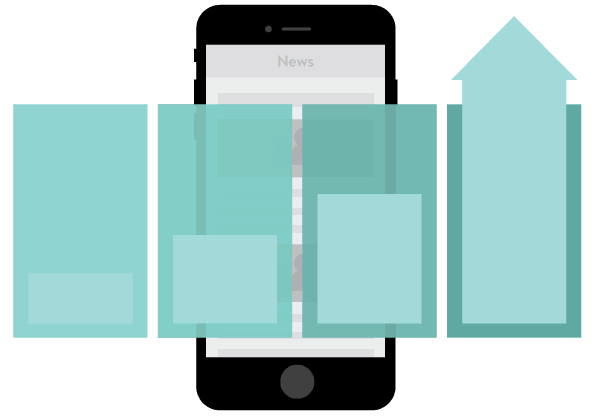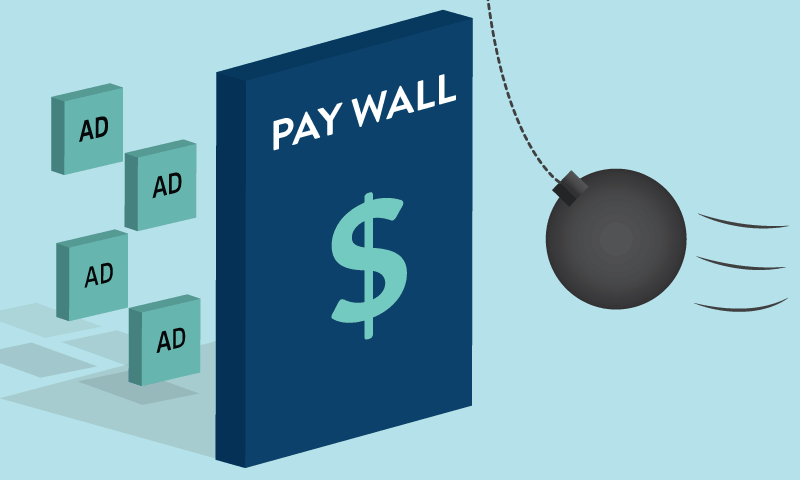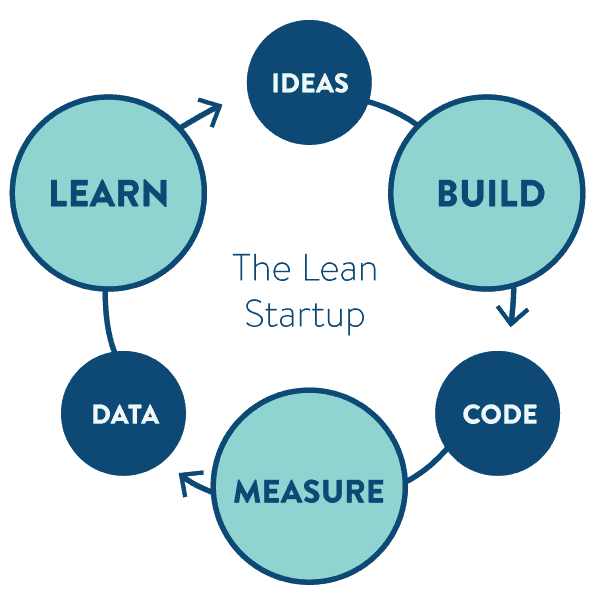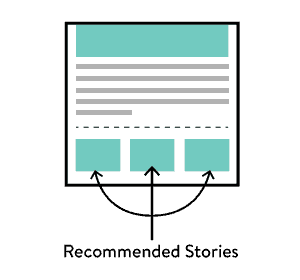
Think different. That’s the story at Canada’s largest daily, the Toronto Star, as they try a revenue strategy that ignores newspaper industry trends and embraces online economics.
It’s counter-intuitive, but the Star’s new monetization plan starts with removing its paywall and cutting digital subscription revenue from thousands of subscribers who pay $9.99 per month.
Just thirteen months after launch, the Star’s decision to eliminate its paywall is as surprising as its announcement to invest millions in creating a tablet edition of its paper for free distribution. Paywall revenue and tablet subscriptions are two common new revenue streams for many newspapers. The Star’s game plan to give both away for free is certainly bold and hopefully calculated.
In the long run the Star is betting that there’s more money in building and monetizing a larger, social, mobile audience on a free access model than in limiting distribution while earning paywall revenue.
We ask: “What’s the ad revenue opportunity cost of every dollar of paywall revenue?” That’s the clarifying question to the paywall debate. Every serious news publisher needs to ask that question in consideration of their future advertisers and readers.
No one has it all figured out yet. Whether you rely on ad revenue only or in combination with a paywall, one thing is certain: increasing ad revenue and user engagement is always a great idea.
In our experience there are four key strategies to grow ad revenue:
- Prioritize the right metrics.
- Optimize ad inventory per session.
- Optimize ad sales.
- Optimize repeat, referral, and inbound traffic.
Implementing just one of these strategies could double ad revenue for some publishers, however the best way to maximize ad revenue is to combine all four. Let’s explore each strategy in detail.
Strategy 1: Prioritize the Right Metrics

With countless metrics from various analytics tools, our first strategy is to separate the critical few metrics from the trivial many. Here’s our criteria for deciding which metrics are worth our attention:
We love metrics that are:
A) Important to a Goal or Constraint
What strategic goals or outcomes should be optimized? Are there bottlenecks or constraints that are limiting performance?
Example: Ad sales are strong but ad inventory is low, so focus on a few key metrics that can be optimized to increase ad inventory.
B) Actionable
What strategic goals or outcomes should be optimized? Are there bottlenecks or constraints that are limiting performance?
Example: Average open rates on push notifications may help an editor decide on the frequency and content of future notifications.
C) Can Be Optimized with Testing
Is it possible to test changes that would directly impact this metric?
Example: Two alternate story layouts could be presented and A/B split tested to determine which layout generates more page views per session.
D) Can Be Optimized with Automation
Is it possible to automate the optimization decision?
Example: Split test two story headlines on the home page and get the system to automatically select the winning headline based on click-through rate (CTR). This leads to a more committed user, longer session times, and a higher propensity for ad engagement.
The above criteria are ways to focus on the metrics that really matter while optimizing in the three areas below.
Strategy 2: Optimize Ad Inventory Per Session
Assume (1) an endless supply of advertisers ready to buy all of your ad inventory at rate card prices and (2) a fixed number of daily visitors to your site or mobile app. How would you optimize the user experience to double or triple ad inventory?
There are several tactics to increase ad inventory and revenue per visitor:
-
- Increase total ad revenue per story:
Design and test alternate story layouts to increase total revenue and ad inventory per story. This may include prioritizing larger ad formats that command higher CPM’s, using default pagination for longer stories (or story comments), and increasing content per story (and session times) with image galleries, video, surveys, or comments. In mobile news apps for example, promoting ads in-line with the content often yields more ad inventory and a smoother experience than promoting fixed ads as part of the app’s navigation.
- Increase total ad revenue per story:
For example, in a recent news app project, we found more advertiser demand and potential yield with larger ad units than a lot of smaller ad units. We made several design changes to replace some of the smaller ad unit inventory with larger ad unit inventory.
- Increase story views per visitor:
Promote related stories, personalized suggestions, and breaking headlines to engage the reader’s curiosity and generate additional story views. Native advertising networks such as Taboola and OutBrain have mastered the practice of piquing curiosity and generating new story views. For one of our publishing clients, the Taboola recommendation widget created an extra path for users to engage with more content within the publisher’s own site.
- Test new user interface elements that increase engagement:
New UI elements and interaction methods can persuade visitors to spend more time per session. For example, some designs promote scrolling or swiping to load the next story automatically, without requiring the user to click or tap on a specific link. Forbes.com automatically sends desktop website visitors to the “Next Post” after scrolling to the bottom of a given story.
Strategy 3: Optimize Ad Sales
Fill rates (% of ad inventory sold) and eCPM (effective revenue per thousand ad impressions) are the two key variables that drive ad revenue for a given amount of ad inventory.
There are several approaches to increase fill rates and eCPM, including:
- Direct or Network: Sell digital ads in the same way as print ads and fill the remnant ad space with promotions from a single ad network such as Google Adwords.
- Test and Combine Multiple Ad Sales Channels: Sell digital ads directly to clients and use ad mediation technology to offer ad space on a Real-Time Bidding (RTB) model to other buyers through multiple ad networks.

Real-Time Bidding requires some investment in ad mediation technology, a willingness to test different networks to determine CPM and fill rates, setting floor prices, and managing the sequence or “stack” of preferred networks. Though it requires more effort, combining multiple ad sales channels with RTB is a great way to maximize eCPM and fill rates.
We’re aware of one large publisher who tested multiple partners, reordered their stack several times, and gradually increased eCPM’s by about 50% and increased fill rates to nearly 100% within a one year period.
Not all networks are the same. In some countries such as Canada, there is a trend of ‘premium publisher’ networks being formed by the nation’s top publishers and media companies. These networks offer national brands (and their agencies) a trusted, quality alternative to international ad networks that may be subject to false impressions and click fraud. For top publishers, these networks are a great way to connect with discerning brands that are ready to buy premium inventory at higher rates.
The other advantage of using multiple networks is the opportunity to connect with future direct advertisers. If an advertiser (or their agency) achieves strong results with a publisher on a platform-based bid, they’re likely to come back and make direct ad buys in the future.
Strategy 4: Optimize Repeat, Referral, and Inbound Traffic
The simplest way to increase ad revenue is to increase traffic from first-time and repeat visitors. To increase traffic, many publishers start with essential search engine optimization (SEO) activities like keyword optimization and authentic link building. However, while SEO is a tactical necessity to get first-time visitors, it’s not a winning strategy to drive repeat traffic on demand.
Dr. W. Edwards Deming, the quality genius behind the lean manufacturing movement, once said, “profit in business comes from repeat customers; customers that boast about your product and service, and that bring friends with them.” That principle is the best way to guide traffic and social media efforts.
Repeat traffic requires a long-term view of the reader’s satisfaction, their readiness to promote stories over social media, and their willingness to be notified of new stories in the future.
There are several ways to increase repeat traffic and future revenue per user, including:
- Opt-in subscriptions to receive ongoing news and alerts by email and push notifications.
- Opt-in subscriptions to special promotions by area of interest.
- Social, referred traffic over Facebook, Twitter, and email.
- Publicly shared article links to increase search engine traffic.
- Increased followers over popular social networks.
- Development of remarketing lists for future campaigns. (i.e. “We can promote your message to 50,000 visitors who accessed our financial planning section.”)
By turning one-time visitors into free subscribers, publishers develop the power to generate future traffic and ad revenue on demand with a broadcast email, tweet, or push notification. There is incredible ROI and business value in a massive, well-nurtured list of subscribers who are ready to give their attention to today’s top stories.
The Agile Publisher
Channels and strategies will continue to evolve, but people will always want to read and share the news. The question is how to serve that need profitably.
No one really knows what the publishing industry – or any industry – will look like in 20 years. The only thing we can forecast is change, and the best way to deal with change is to stay agile.

In the language of the tech startup world, the Toronto Star is doing a “pivot,” abandoning its paywall and aiming to grow its digital and mobile business entirely through advertising. It’s a bold action. They built a paywall, measured the results, and learned that it didn’t work, and so they’re trying something new. Build, measure, learn, repeat. That’s the mantra of the Lean Startup movement in the tech world. We applaud that.

Fortunately it’s not an “either-or” between user engagement and ad revenue. For most publishers, there are several areas that can be changed to drive greater user engagement and ad revenue at the same time. And though it may take time to test what works and apply the above four strategies, the results are cumulative and ongoing.
For example, focusing on one area every four months, a publisher could double ad inventory per visit, double average eCPM per ad unit available, and double the volume of daily visits, resulting in an eight-fold increase in ad revenue. If that sounds way too aggressive, consider starting with a goal of 50% revenue growth per year.
Being an agile publisher opens up opportunities at every level from paywall strategies to story page layouts. It’s a matter of choosing the priority areas and constraints, one per month or one per quarter, and getting started.
Are you a publisher looking to enhance your digital strategy? Last year, MindSea partnered with The Chronicle Herald to redesign and redevelop their iOS app. The app went on to be recognized by Apple in their Best of 2013 category, and was awarded second place in the International News Media Association Awards. We also developed the Android and iOS apps for the Postmedia Network. If we’ve piqued your interest, you can get started now with our App Design Guide or get full details on our approach and pricing with a quick email to hello@mindsea.com.






